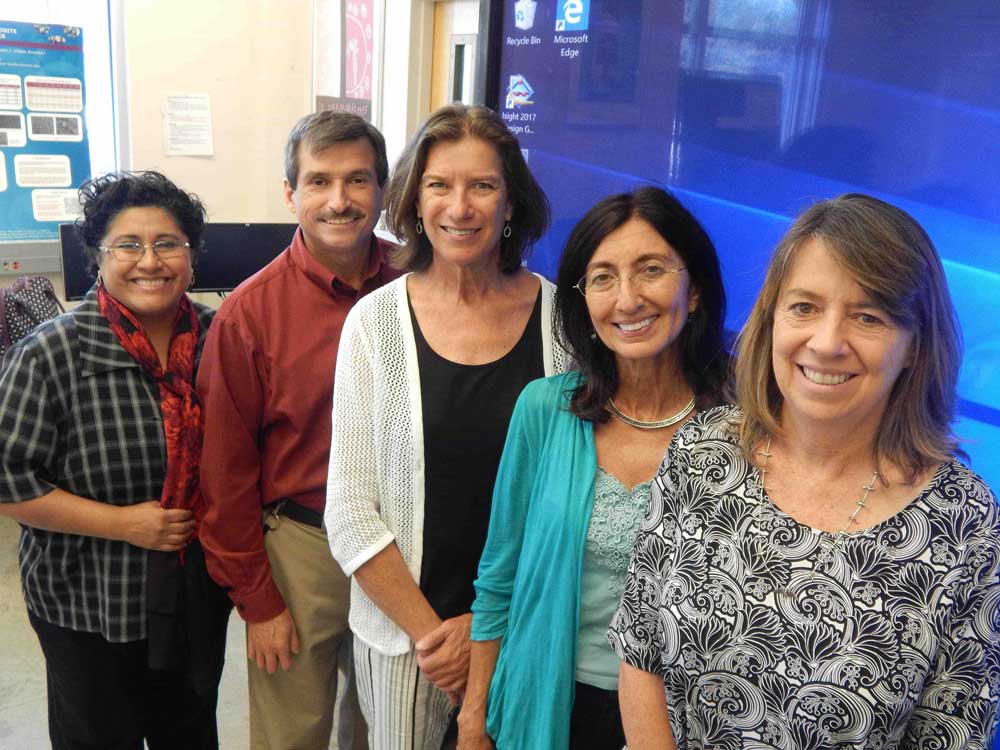The National Science Foundation recently announced its first research awards under the Hispanic-Serving Institutions Program. In addition to 31 projects awarded to community colleges and universities across the country, a $2.6 million, five-year grant will fund a first-if-its-kind HSI Resource Hub at New Mexico State University, in collaboration with Dona Ana Community College and California State University-Northridge.
“This is outstanding news,” said NMSU Chancellor Dan Arvizu. “This builds upon the leadership NMSU has established in this field and is consistent with the strategic direction we have established for the university.”
Elba Serrano, NMSU regents professor, is the principal investigator for the NMSU arm of the project, which will create a network to share best practices among the 450 Hispanic-serving institutions to build capacity for STEM education.
“Our institution is incredibly honored to be given this opportunity to be the national leader for this project,” Serrano said. “But I want to emphasize that this is a team effort and that we were awarded this grant because of New Mexico State and CSUN’s leadership as HSI research institutions and universities that have supported STEM research training and education, especially for underrepresented minorities, as part of their mission for decades.”
The goal of the Resource Hub is to empower student success by helping Hispanic-serving institutions develop strategies and obtain the resources needed to improve the quality and outcomes of undergraduate STEM education. Through collaboration among NMSU, DACC and UC-Northridge the Hub aims to achieve its goals by connecting HSIs with each other to help them share knowledge to improve grant writing, administrative tools, diversity and teaching practices to increase retention and graduation.
“We envision a higher education landscape in which HSIs have institutional capacity that enables them to access the information, funding, and other resources needed to increase Hispanic student success that leads to advanced educational opportunities and productive employment in STEM fields,” said Sonya Cooper, regents professor and associate dean in NMSU’s College of Engineering and co-principal investigator for the project.
Other NMSU co-principal investigators include Martha Desmond, regents professor in Wildlife and Fisheries Department in the College of Agricultural, Consumer and Environmental Sciences, and Delia Valles-Rosales, associate professor of industrial engineering.
“I am grateful to be a part of this team,” said Valles-Rosales. “The Hub can empower other HSIs to help students in STEM fields. We want to set up a system with standards and procedures in place that keeps evolving and growing.”
The Hub will provide resources to help faculty at HSIs learn how to write NSF grants and follow through with documentation required from start to finish in order to understand how the grant process works and give them the confidence to apply for larger grants.
“It’s important to show faculty how to negotiate the process of grant writing if their university doesn’t have that support,” said Desmond. “We can help faculty and institutions with the process so faculty can spend more time in the classroom.”
The HSI Resource Hub team will host a town hall event at the October meeting of the Society for Advancement of Chicanos/Hispanics and Native Americans in Science in San Antonio to launch the project and get student and faculty input about Hub activities.
While the Hub plans to organize activities, workshops and conferences, the team will also work to strengthen the pipeline for students from two-year community colleges to four-year institutions. “More and more people are entering community colleges and it’s where you find greater representation of Hispanics and it’s a critical step in the transition to STEM degrees,” said Serrano.
Co-principal investigators from DACC include Monica Torres, recently named interim president at DACC, and Jon Juarez, regents professor and chair of DACC’s computer technology program.
Juarez says one of the most important aspects for the success of the hub is getting the communication portal in place in order to be responsive in meeting the needs of HSIs across the country.
“We have to use technology to bring in 450 institutions to begin to communicate and be able to create mentor-mentee relationships,” Juarez said. “This project is unique in that we’re planning to use more modern techniques and technology. We have to create a combination of synchronous and asynchronous communication.”
The Hub has an advisory council working with it and a core team of faculty across the country partnering with the group to guide and give input as they get the project underway. They also hope to partner with industry and the community to build the program.
“It’s important to recognize this is a resource hub with a service mandate,” Serrano said. “The hub must respond to community needs and strengthen HSI networks. By connecting people and building on existing resources, we can move forward together more quickly and efficiently. Ultimately, we aspire to promote student success by building HSI institutional capacity for STEM research and education.”
 |
| From left: The HSI Resource Hub includes: Delia Valles-Rosales, NMSU associate professor in the College of Engineering; Jon Juarez, DACC regents professor and head of computer technology; Sonya Cooper, NMSU regents professor and College of Engineering associate dean; Elba Serrano, NMSU regents professor in the College of Arts and Sciences; and Martha Desmond, NMSU regents professor in Wildlife and Fisheries Department in the College of Agricultural, Consumer and Environmental Sciences. (NMSU Photo by Minerva Baumann) |
